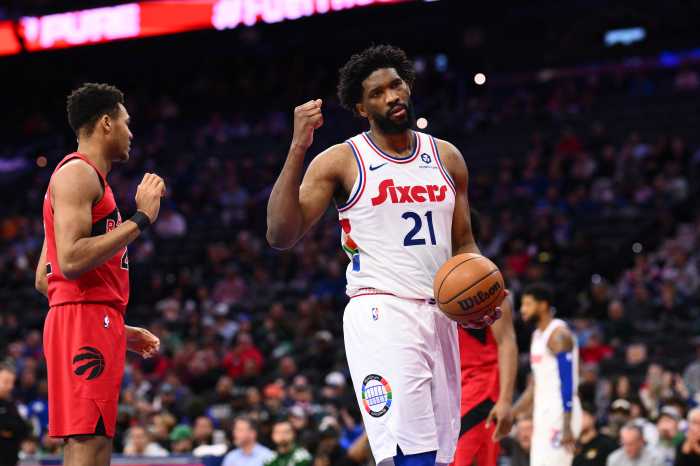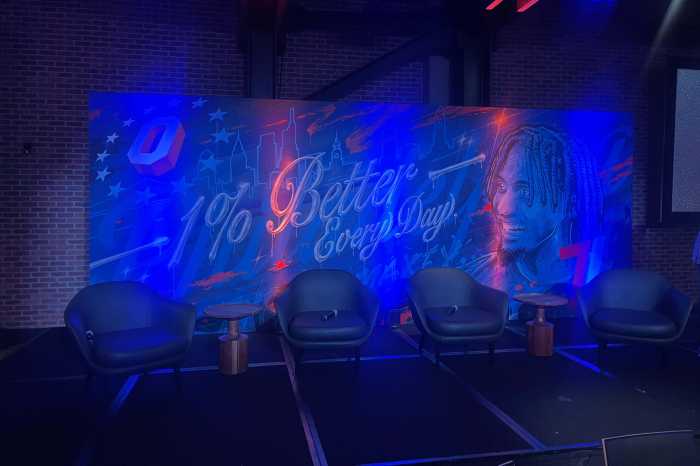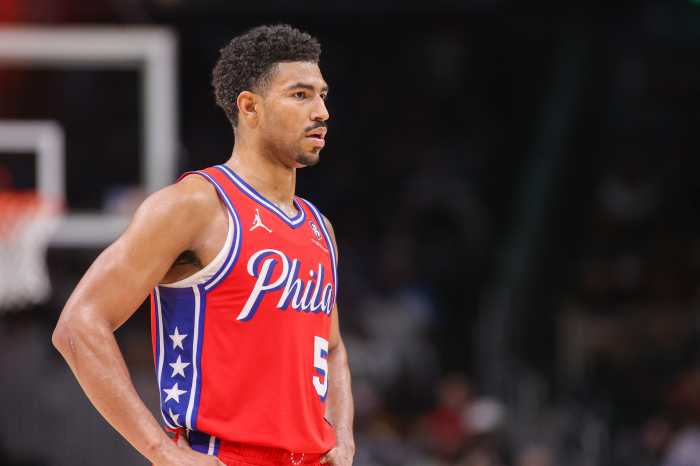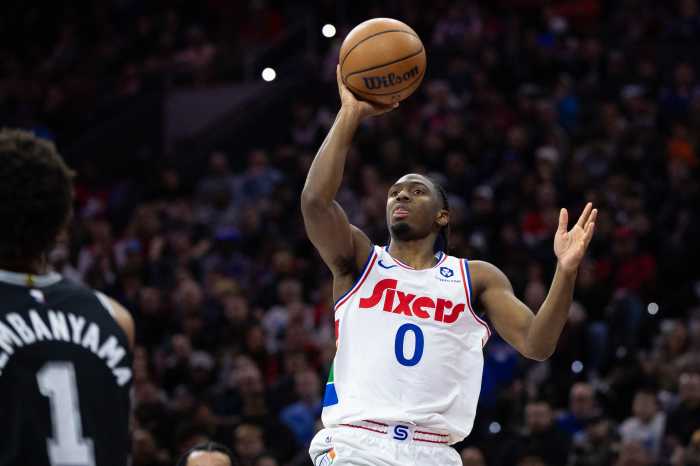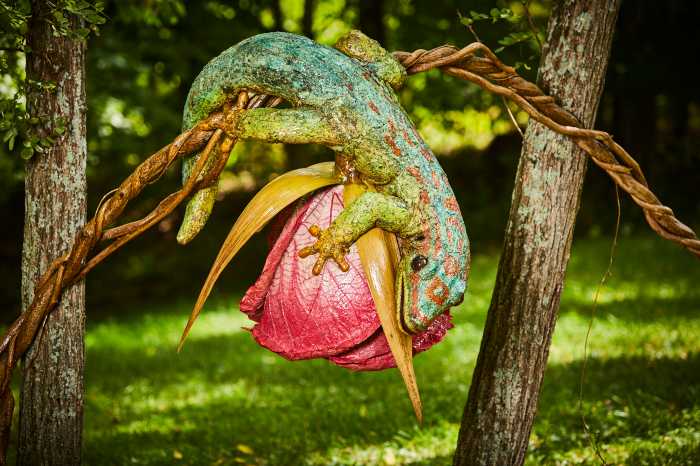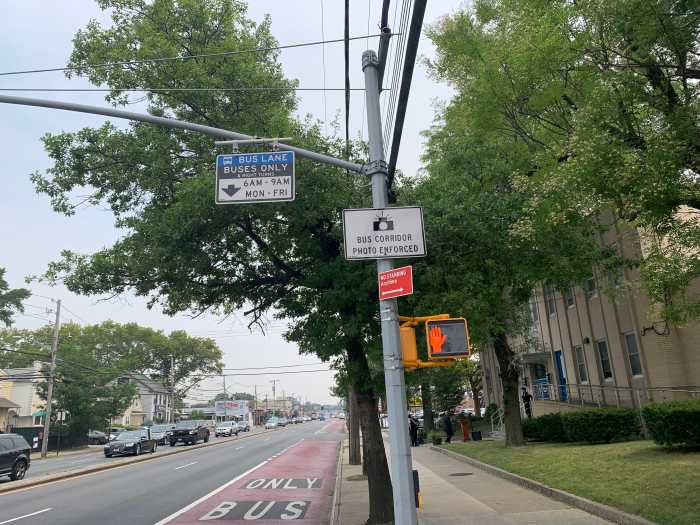With the addition of nine-time All-Star swingman Paul George, among all the other moves the team has made during free agency, the draft feels like it was ages ago for Sixers fans. In reality, the newly minted two-day event went down less than two weeks ago. President of basketball operations Daryl Morey came away with two promising talents in a class that was said to be historically weak.
In the first round, he grabbed Duke sharpshooter Jared McCain with the 16th-overall pick. McCain is expected to be an immediate contributor due to his blue-chip pedigree, playmaking, and NBA-ready outside shooting. Whether it be as a microwave sniper off of the pine or as an off-ball foil for Tyrese Maxey in the starting backcourt, McCain should have plenty of opportunity to showcase his skills next season.
With the 41st selection, the Sixers came away with a player that a lot of draft analysts expected to go in the first round, UCLA’s Adem Bona. Bona might not have the same lofty ceiling as some of the big men who went before him, but his athleticism, motor, experience, and simplified role could allow him to make an impact in year one for a playoff contender.
Between McCain and Bona, Philadelphia already had a great draft, but Morey wasn’t done making moves after just two rounds. Following the draft, the Sixers signed former Kentucky wing and Philadelphia native Justin Edwards as an undrafted free agent. Signed to a two-way contract, Edwards will be a primary focus for the Delaware Blue Coats next season, but if things break extremely well, we might see him suit up for the Sixers sooner rather than later.
From five-star recruit to undrafted free agent
Although he ended up an undrafted free agent, fans of college basketball and draft heads should already be extremely familiar with Justin Edwards. After all, he was a five-star recruit coming out of Imhotep Institute. 247sports had him ranked as the number one small forward and the third-overall prospect in the nation.
Adam Finkelstein, 247sports’s Director of Scouting, lauded Edwards’s advanced offensive skillset, physical gifts, and two-way motor.
”When Edwards is at his best, he’s scoring at multiple levels, being active defensively, and showing his ability to rebound in high-volume. He’s a lefty with good positional size at 6-foot-7 and naturally soft hands. He has a very advanced mid-range game with an ability to get to his spots, pull up over top of contesting defenders, and even utilize a floater if he gets deep enough.”
Unfortunately, his game didn’t translate at the college level the way he and Kentucky were hoping. In 32 games, Edwards averaged just 8.8 points, 3.4 rebounds, and 0.9 assists in a little over 21 minutes per outing. He was never quite able to find his offensive groove in the Wildcats system and plummeted down draft boards as a result. Even in a “historically weak draft,” none of the teams thought he was worth taking a chance on with one of their selections. Now, he has the chance to prove them all wrong with the Sixers.
What went wrong for Edwards?
The NBA has proven that situation and fit are crucial for the proper development of young players. That goes for college as well, but it isn’t as commonly known or acknowledged. The NCAA’s new transfer portal rules should help to change that narrative, though, as we’ve seen plenty of players revive their draft stocks after changing scenery. This past draft had a few examples, including Devin Carter (13th pick), Kel’el Ware (15th), and Dalton Knecht (17).
For Edwards, he played on one of the stranger and more mismatched Kentucky rosters in recent memory. Head Coach John Calipari’s teams are at their best when they have a clear and established star to play through, like Julius Randle, Brandon Knight, and Anthony Davis. This year’s Wildcats didn’t have that. They had two top-tier prospects in Edwards and D.J. Wagner, but neither player was able to grab the reins and make the team their own.
They could have gelled harmoniously as a unit, like the 2009-10 Kentucky team featuring John Wall, DeMarcus Cousins, Patrick Patterson, Eric Bledsoe, and Darius Miller. Unlike the 09-10 squad, though, this past year’s Wildcats didn’t have complementary pieces. All of their best players had overlapping skills in the backcourt, with Antonio Reeves, Rob Dillingham, Reed Sheppard, Wagner, and Edwards all capable of being primary ball-handlers.
Due to their mismatched roster, Kentucky underwhelmed last year, finishing 20th in the final AP poll before losing in the first round of the NCAA Tournament to 14th-seed Oakland. Perhaps Calipari was too unfocused to find a way to make Edwards and the rest of the roster work, as he went on to accept a five-year, $35 million contract to take over the Arkansas Razorbacks program.
Signs of encouragement
It’s justifiable to say that Edwards underperformed in his time at Kentucky, but it’s wrong to completely write off such a promising talent after a single deflating campaign. As a 19-year-old, he got off to a slow start on a mismatched roster and lost out opportunities to unexpected risers like Rob Dillingham and Reed Sheppard.
Edwards was listed as a small forward and certainly has the tools to be a high-level wing, but he’s always been at his best with the ball in his hands, either creating shots for himself at all three levels or finding his open teammates. With last year’s Wildcats, he simply didn’t have the personnel around him to maximize his output.
While he had a discouraging college season overall, Edwards was able to showcase all of the skills that made him the number three recruit in the country in flashes. Most notably, he dropped a cool 28 points on perfect shooting against conference rival Alabama, the AP 13th team at the time of the clash.
Even more encouraging is the fact that he found ways to contribute to his team despite losing out on his expected role as a primary scoring option. He still put in the work on defense, logging a steal in 17 games. He had two or more steals in 10 of them. He also shot over 50 percent in 18 of his outings, even though he was playing an offensive role completely different than what he was used to.
The world may not have gotten to see Justin Edwards dominate against top-level competition in the NCAA, but that doesn’t mean he never shined among the best of the best of his peers. Edwards has gone band for band with some of the greatest players in the world on multiple occasions: including in the McDonald’s All-American game, the Nike Peach Jam, and with USA basketball.
With Jared McCain, the Sixers got a blue-chip prospect with translatable skills that indicate a good long-time pro. With Adem Bona, Philly nabbed an underdog who scrapped his way to the top through his physical gifts and motor. With Justin Edwards, they may have gotten the best of both worlds. His former coach certainly thinks so, at least.

